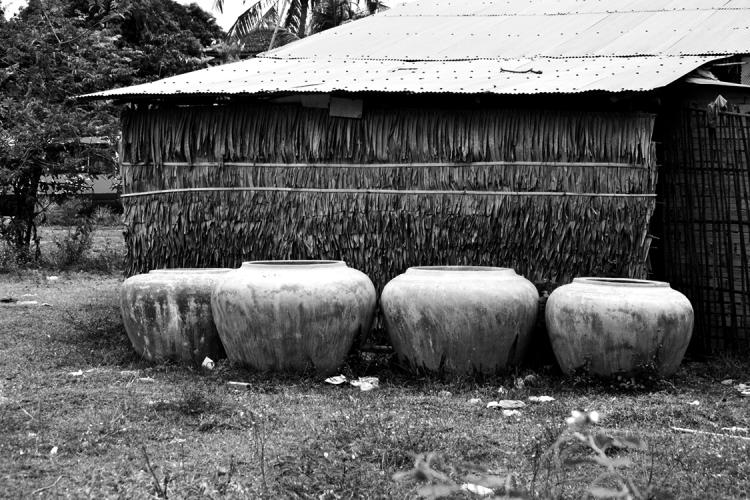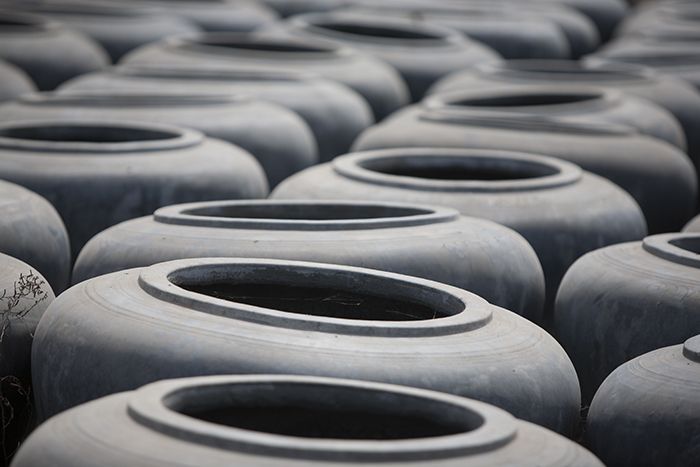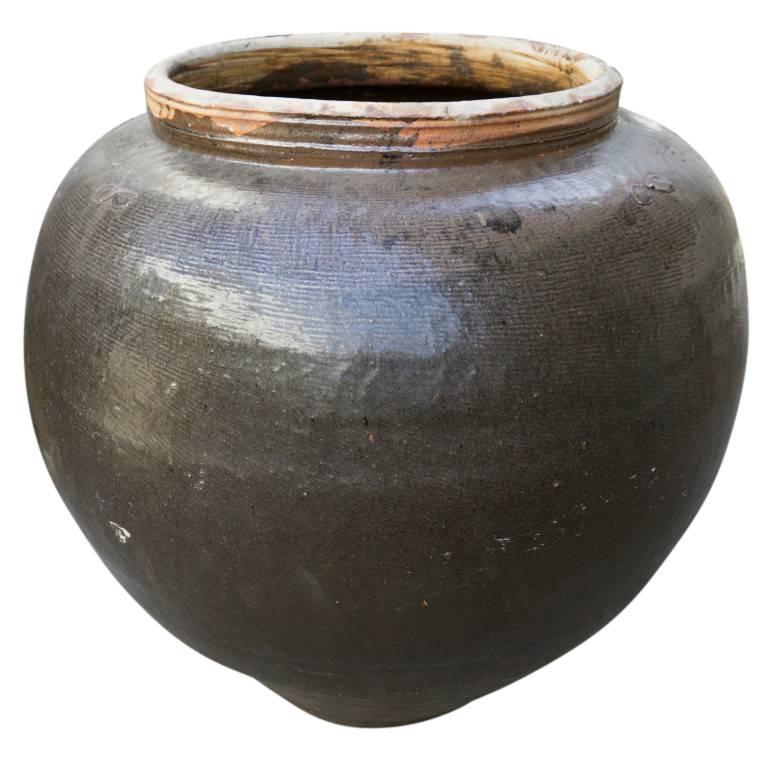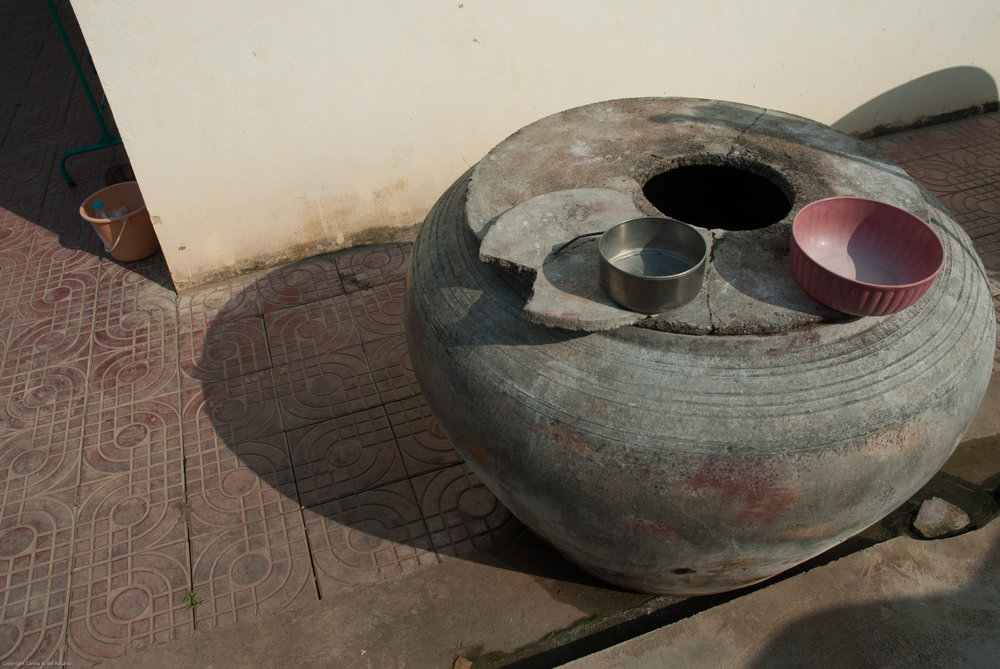The water jar district of Battambang is home to various families living from this trade. Each family marks its hand-made jars differently, often with red and yellow paint for good luck. The manufacturing process starts by collecting clay from the fields and rivers that is shaped onto a wooden mold. Then, a cloth is wrapped around it and three layers of concrete are cemented onto the cloth, with added wire for extra strength.


The whole process takes about four hours. After four to five days, the jar is dry and ready to be transported. Driving through Battambang, it is not uncommon to see a rusty 125cc scooter pulling a trailer with five massive 1000-litre jars on roads full of potholes!

Given the fact that there is often no running water in rural Cambodian villages, water jars provide a real life improvement to families. Usually, fetching water is one of the girls’ chores before heading to school, and being able to store it in these jars saves them time in the morning, allowing them to catch their transport on time.

According to www.bestregardsfromfar.com
Phuong Thu Tran (editor) – ASEAN Records Organization (aseanrecords.world) (Source of photos: internet)













